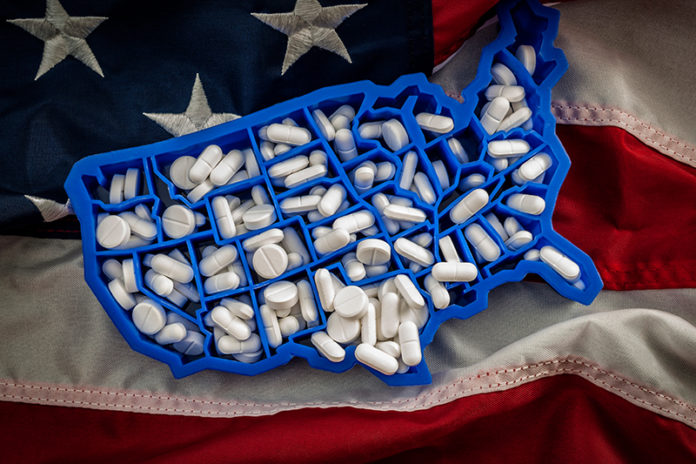Long before the arrival of COVID-19, America was being ravaged by a deadly epidemic.
Unlike the coronavirus, though, the drug overdose plague didn’t elicit a massive response from public officials. And the epidemic has not only continued but gotten worse.
In 2020, more than 93,000 people died of drug overdoses, most of them after ingesting fentanyl or similar synthetic opioids. That’s double the death toll in 2014, and the number continues to rise.
Law enforcement agencies have been fighting the drug war for decades, with no record of success. But that doesn’t stop politicians from claiming that tougher policies are still the only answer.
This month, Reps. James Comer of Kentucky and Cathy McMorris Rodgers of Washington, who are the ranking Republicans on two important committees, wrote a letter to officials at the Drug Enforcement Administration, Customs and Border Protection and the Office of National Drug Control Policy. “The Biden administration’s border policies,” they charged, “are allowing fentanyl and fentanyl-related substances to cross our borders at unprecedented rates.”
Former Secretary of State Mike Pompeo makes the same accusation. “Kids all across America are going to die as a result of the failure of this administration to secure that border,” he said in October.
But blaming Joe Biden for the jump in fentanyl fatalities is like blaming him for global warming. The problem long predated his arrival. Republicans applauded Donald Trump’s border policies, but the number of deaths from overdoses of fentanyl and other synthetic opioids tripled during his term.
Comer and Rodgers also get important facts wrong. They claim that “in Arizona, fentanyl is the number one killer of teenagers.” But the source they cite says that is true just in one county, not the entire state.
The reasons for opioid addiction are complex. But the reasons for the shift to fentanyl are simple. First, the federal crackdown on prescription opioids meant that many users had to find other ways to satisfy their cravings. Second, the government’s efforts to stop smuggling backfired in exactly the way they usually do.
Critics of the drug war cite the Iron Law of Prohibition, coined by marijuana activist Richard Cowan: “As law enforcement becomes more intense, the potency of prohibited substances increases.” Or, more simply: “The harder the enforcement, the harder the drugs.”
As smuggling drugs gets more risky, suppliers look for ways to reduce the size and maximize the value of each shipment. Because fentanyl is 50 times more potent than heroin, there are a lot more highs — and dollars — in a pound of the former. As a result, the drug is now mixed into other drugs, including heroin, cocaine, methamphetamine and fake prescription pills, putting unwary users in mortal danger.
Enforcement of drug laws manages to tilt the market toward more powerful and dangerous substances, but it has a long record of failing to curb drug use. If “tough” border policies were the solution, Trump would have made great progress against overdose deaths. But the epidemic got worse, not better.
There are options that promise better outcomes. One is allowing users to inject drugs in facilities known as supervised injection sites, where medical personnel can monitor them for overdoses and quickly administer naloxone to reverse them. Asked last year if he was ready to promote these, Health and Human Services Secretary Xavier Becerra said the administration is “looking for every way to do that.”
So far, though, there are only two legal facilities in the entire country, both recently opened in Manhattan — though Rhode Island has legalized them. One of the New York sites reported averting at least 59 overdose deaths in the first three weeks of operation.
Canada’s 37 legal sites have never recorded a fatal overdose.
Another remedy is to expand access to test strips that can be used to detect the presence of fentanyl in drugs, giving users a way to know what they’re putting into their bodies. But most states have made it a crime to possess these test strips, on the theory that they encourage drug use. That makes about as much sense as banning seat belts because they encourage drivers to speed.
Expanding access to treatment, for drug users who want to overcome their dependence, also offers promise. But it’s more important to keep addicts alive than it is to cure them of their addiction. We are still failing at that.































